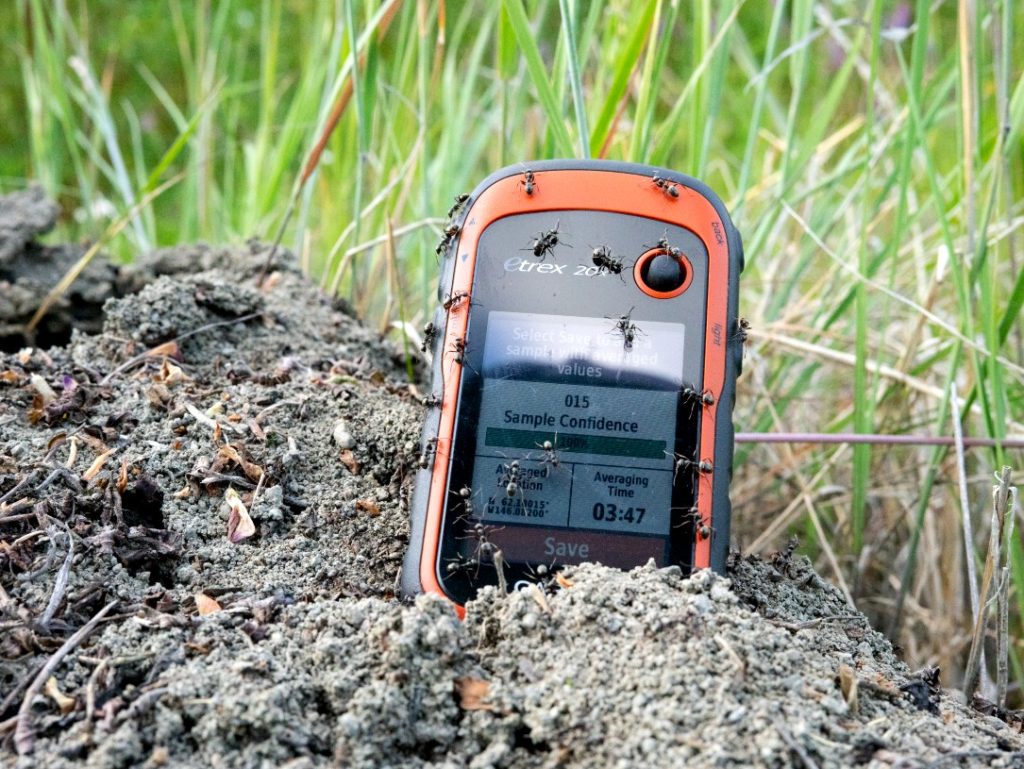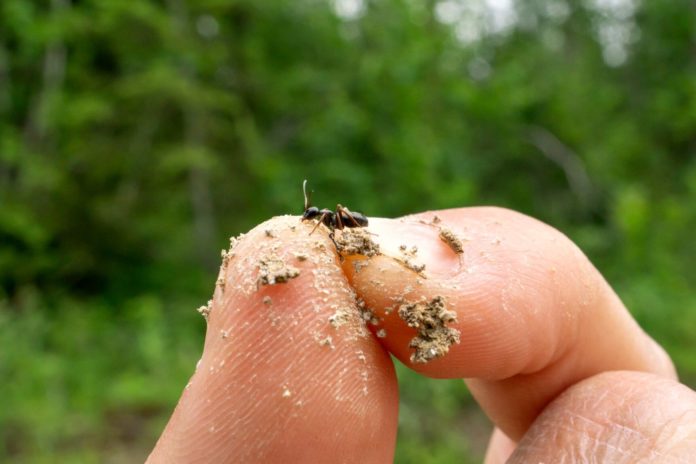Sexually reproducing organisms usually invest equally in male and female offspring. But there may be a deviation from this.
This deviation led researchers to study parent-offspring conflict, genomic conflict, and cooperative breeding. Some social insect species exhibit the unusual population-level pattern of split sex ratio, wherein some colonies specialize in producing future queens and others specialize in the production of males.
However, previous studies assumed that split sex ratio was not under genetic control.
Researchers have discovered the genetic basis for split sex ratio— how ant queens produce entirely male or female broods.
“It’s weird to have any parent that’s only producing one sex or the other,” said UC Riverside entomologist and study author Jessica Purcell.
Scientists have known for some time that ant colonies can specialize in producing all-male or all-female offspring. For the first time, UC Riverside scientists have located a set of genes on a single chromosome associated with this phenomenon.
They have published their discovery in the new article of the National Academy of Sciences.
When humans mate, both parents contribute one copy of the genome to their offspring. However, female ants are the only ones that carry two copies, like humans and most other animals do, while the males have only one copy.
“Male ants develop from unfertilized eggs their mother lays,” said UCR evolutionary biologist and senior study author Alan Brelsford. “Therefore, male ants, as well as bees and wasps, genetically have a mother but no father.”
Purcell and Brelsford found their study specimens in 2016 while traveling to collect and study ants from Riverside to the Arctic Circle. In northern Canada’s Yukon territory, they found more than 100 colonies of two Formica ant species that appeared ready for their annual reproductive flights. Back in Riverside, ecology doctoral student German Lagunas-Robles analyzed the genomes of these ants, looking for differences between male-producing and female-producing colonies.

A queen will mate, land, chew off her wings, and look for a place to burrow during mating flights. She’ll lay roughly a dozen eggs in that burrow, which then develop into her first brood of workers. These worker ants are always female, but they won’t reproduce. Once they’ve matured, the workers take over foraging for food, and the queen continues to reproduce, laying hundreds of eggs per day.
While the males live for only a few hours after their mating flight, the queen will store their sperm and use it over the next decade to produce new offspring. Most of the young in an ant colony are wingless workers, but in mature colonies, queens will also produce offspring that can fly.
Though the researchers found genes associated with which sex of offspring is produced, genetics may not be the only way that queens can influence the sex of their colonies. They could decide not to use their stored sperm, which would result in male ants. Workers could also manipulate the sex ratio by not feeding or selectively killing certain larvae.
Other studies have documented that food availability also affects the sex of an ant colony.
“When extra food is dumped on a colony, it produces fewer males,” Brelsford said. The research team wants to conduct additional studies to learn when genes or environmental factors play a more significant role in determining the sex of offspring.
The team also wants to study how these genes work in different environments to help the preservation of beneficial native North American ants. Mating flights tend to coincide with specific seasons and temperatures. Climate change could affect food availability and breeding timing and generally throw the sex ratio unbalanced.
Unlike their invasive, non-native pesky relatives, these species rarely bother humans and perform essential environmental functions.
“Ants are really integral to ecosystems as one of the most abundant insects,” Purcell said. “Gardeners tend to love earthworms, but ants do similar things to enhance soil health.”
Journal Reference
- German Lagunas-Robles, Jessica Purcell and Alan Brelsford; Linked supergenes underlie split sex ratio and social organization in an ant. PNAS November 16, 2021 118 (46) e2101427118; DOI: 10.1073/pnas.2101427118
